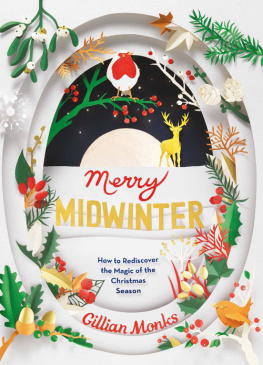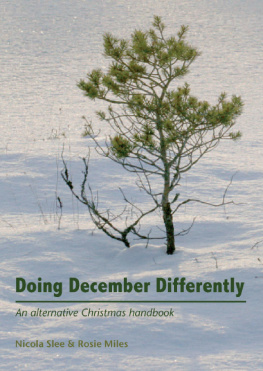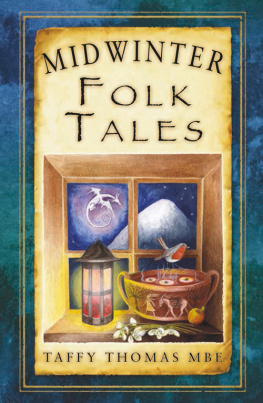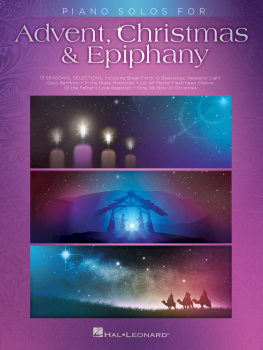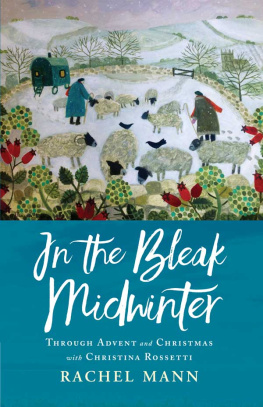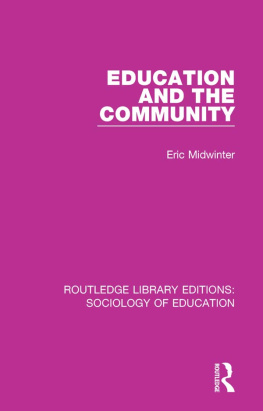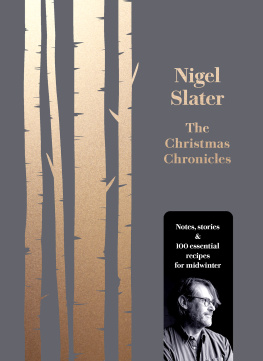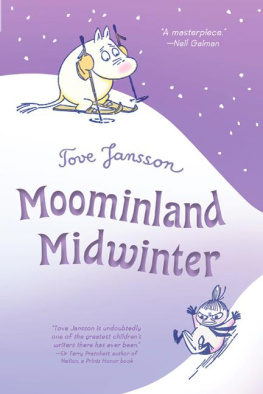
GILLIAN MONKS is a Quaker, Theosophist and practising Druid. She was born and brought up in Lancashire. She trained as a teacher and graduated from Lancaster University. She is developing a spiritual retreat on a five-acre plot where she also leads and facilitates workshops in self-development and spirituality. She lives with her husband and son, five cats and two dogs in the heart of Snowdonia.
Read the blog at
Merrymidwinter.com
and visit
gillianmonks.com
For my son, Dafydd, without whose advice, vision and encouragement this book would never have come to fruition.

For my husband, Holger, whose loving understanding and support has meant so much.

For Jenn, dearest friend, whose love and enthusiasm has constantly inspired and spurred me on.

For my mother, Joan, whose singular lifestyle, outlook and beliefs have taught me so much.

To you all I dedicate this book, with much love.
Contents
Introduction
Christmas is to remind us of the importance of love not just to provide a reason for expressing it for a few days in December each year, but to spur us on in our endeavours to give it full rein ALL year round.
MIDWINTER FALLS UPON 21st December and humanity has celebrated on that day for many thousands of years. The whole relevance and success of the coming breeding and planting season, of growth and harvest, and the resultant well-being of all living things upon the face of the Earth, has always rested upon the pivotal point of Midwinter when the darkest days are experienced, and the light and warmth of the Sun begins to grow perceptibly stronger. This is the whole nub of the year, for if the heat and light of the Sun remain absent and the dark and cold continue life here on this planet will very quickly come to an end.
Many of our most cherished Christmas customs derive from a time when we all actively acknowledged, awaited and honoured this vital solar event upon which our survival so totally depends.
Festooning our homes with evergreens holly, ivy, mistletoe and bay, among others was originally done to provide literal and symbolic shelter through the worst of the winter weather for the woodland spirits which embodied the very essence of natural life. Our predilection for setting up a Christmas tree in our homes springs from the same source and is an important icon of twenty-first -century winter which is recognised (if not practised) all around the world.
Saint Lucy with her crown of candles and basket of sweetly spiced buns has her feast day on 13th December, the date of the original Winter Solstice before the calendars were changed and updated in 1752. She is just one of the remaining archetypes who originally represented the divine mother of bounty and nurture in the natural world. This archetype, in her many guises, returned the light to the land; as was ritually played out each year in Greek mythology by the characters of Demeter and Persephone. In some northern lands this archetypal female appears as Frau Holle (or in northern Britain as Mother Holly), causing snow to fall every time she shakes her feather mattress or plucks her Christmas goose, rewarding goodness and industry but punishing misbehaviour and laziness.
It is this generic female deity, embodied by such figures as Saint Lucy and Frau Holle who variously gave birth to or partnered the Wild Man of the prehistoric Boreal Forest a masculine character who has undergone many changes of appearance and purpose but who now sits at the very heart of our Midwinter celebrations in the guise of our best-beloved Christmas archetype, Father Christmas.
The 25th December is the first day after the Winter Solstice when, in the Northern Hemisphere, the length of daylight can be perceptibly measured as having grown longer, and has been revered as a singularly special day in many cultures and geographical areas throughout the history of mankind. The Ancient Egyptian god Isis, the Greek god Apollo, the Persian god Mithras and the Roman god Sol Invictus are just four among many divine solar entities whose birth was celebrated on 25th December, long before the coming of Jesus and Christianity. Jesus is the last in a very long and dearly loved line of divine archetypes who have always held the highest place in their peoples spiritual beliefs and affections.
As such, Midwinter has always been a time for people to set aside their differences, lay down their weapons, and come together in a sense of community and celebration. We all share a spiritual heritage which reaches back into our primordial beginnings.
My hope is that once again, we can learn to level all barriers of place, social standing, genetic heritage and religion, demonstrating a way to bring everyone together in the celebration of winter, the rebirth of spring, and humanitys place within the scheme of things. In so doing perhaps we can show how to transcend all our lower, baser feelings and behaviour and use Midwinter and the celebration of the rebirth of Light as a focus to bring out the very best in all of us, not just for Christmas, but as a pattern for honouring, respecting, living and loving all the year through.
I wish to inspire, to help people redirect and re-understand the whole reason for celebrating Christmas and Midwinter. I hope to reach out to people on many levels and that everyone will find something in these pages to relate to and bring new joy into their lives.
I have included reminiscences from my childhood which I hope might jog older readers memories and possibly entertain younger children. Parts of each chapter are certainly written so that they can also be read aloud and shared between parents and their little ones.
There are also lots of accounts of how my family and I go about our preparations and celebrations now. There are ideas and instructions for how to make your own decorations, your own entertainments, and re-write your own winter songs and carols to more genuinely reflect who you are and what is most important to you.
Then there are the simple seasonal recipes (for the whole of winter, not just Christmas!) which have been taken from my mothers own manuscript cookery book, and her varied observations, which appear as Comments from Joan. Faithfully reproduced in her own words just as they were written many decades ago, they reflect some of the difficulties and shortages of the 1940s and 1950s onwards, but they also provide a snapshot of the hopes and dreams of an ordinary hard-working young wife and mother. Here you will not find dishes which cater for dietary preference or medical requirement such things were almost unheard of then, and in the years immediately after the Second World War the focus for many people remained on finding enough of anything to eat. Consequently her recipes (and sometimes her comments) reflect my mothers endeavour to do the best she could with basic or poorer ingredients, nonetheless managing to produce nutritious, tasty and satisfying meals.
So often I hear people criticising Christmas; the frantic shopping sprees, the over-spending , the massive consumerism and rivalry in giving, wearing, eating and drinking. We are all helping to create this gross distortion so stop it. Now. These modern practices merely serve to mask and ultimately degrade our original resonance with and connection to something of great beauty and joy.
Next page
